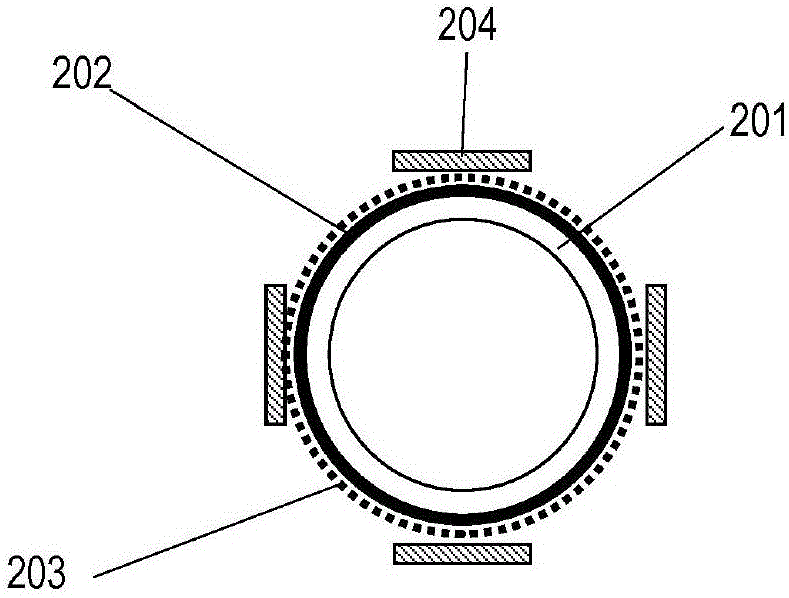Method for fusing aramid/aramid fibres
A technology of aramid and fiber, applied in the field of shaped products, which can solve the problems of increased material expenditure and high weight of formed objects
- Summary
- Abstract
- Description
- Claims
- Application Information
AI Technical Summary
Problems solved by technology
Method used
Image
Examples
Embodiment 1
[0210] under magnetic stirring 1780 denier fibers were dissolved in 1-ethyl-3-methylimidazolium acetate at 80°C for 3 hours. Add 5% by weight of The fibers gave a clear viscous solution. When adding 10% by weight of When the fibers were mixed, initially not all of the fibers were completely dissolved, but heating to 100°C again provided a clear viscous solution. At 100°C, additionally add Fibers increased the concentration to a clear solution of 20% by weight, which formed a highly viscous solution.
[0211] To 10 g of 1-ethyl-3-methylimidazolium acetate (CAS 143314-17-4; content HPLC > 98% by weight, water T-240 220 denier fibers and magnetically stirred overnight at 80°C in a sealed round bottom flask. The aramid copolymer fibers were completely dissolved and a homogeneous mixture was obtained. After cooling and adding about 50% by weight of water as anti-solvent, the fibers reprecipitated and "wrapped" at least partially around the glass capillary by stirring wit...
Embodiment 2
[0213] Will T-240 220 denier fiber (para-aramid copolymer) and Each (3 mg) of the 1780 denier fiber (meta-aramid) was treated with each (1 g) of the following dry (<1 wt. % water) ionic liquid or salt and stirred at 100° C. for three hours . Observation and measurement of the solvation properties of the aramid fibers yielded results shown in Table 3.
[0214] table 3
[0215]
[0216]
[0217] Aramid fibers treated with ionic liquids 1-15 were completely dissolved and had the potential to re-precipitate by adding water as anti-solvent. Ionic Liquids 16 to 19 showed strong swelling activity, but both studied fiber types only gelled or partially but not completely dissolved; Ionic Liquids 20 to 22 only partially dissolved the surface of the aramid copolymer . In addition, with regard to ionic liquids 16 to 22, the swelling process can be reversed by adding water. All other ionic liquids (24 to 36) left no change in the fibers. Comparative Examples 37 to 40 represe...
Embodiment 3
[0222] Will Each (3 mg) of K29 fibers (para-aramid) was treated with each (1 g) of the following ionic liquids and stirred at 100° C. for 3 hours. The solubility properties of aramid fibers in different ionic liquids were observed and measured, and the results are shown in Table 4.
[0223] Table 4
[0224]
[0225]
[0226] In all other ionic liquids and salts described in Example 2, K29 is completely insoluble. A comparison between Example 2 and Example 3 shows that the para-aramid fiber behaves differently from meta-aramid fibers or para-aramid copolymer It can be postulated that in the interaction of two para-aramid polymers, the hydrogen bonds are particularly strong, on the one hand due to the strongly polarized N–H bond in the para position, and on the other hand due to the optimal geometric arrangement. Only those ionic liquids with strongly coordinating anions are suitable for dissolving para-aramid fibers. When the halide fluoride was used as anion ...
PUM
| Property | Measurement | Unit |
|---|---|---|
| melting point | aaaaa | aaaaa |
| melting point | aaaaa | aaaaa |
| diameter | aaaaa | aaaaa |
Abstract
Description
Claims
Application Information
 Login to View More
Login to View More - R&D
- Intellectual Property
- Life Sciences
- Materials
- Tech Scout
- Unparalleled Data Quality
- Higher Quality Content
- 60% Fewer Hallucinations
Browse by: Latest US Patents, China's latest patents, Technical Efficacy Thesaurus, Application Domain, Technology Topic, Popular Technical Reports.
© 2025 PatSnap. All rights reserved.Legal|Privacy policy|Modern Slavery Act Transparency Statement|Sitemap|About US| Contact US: help@patsnap.com



